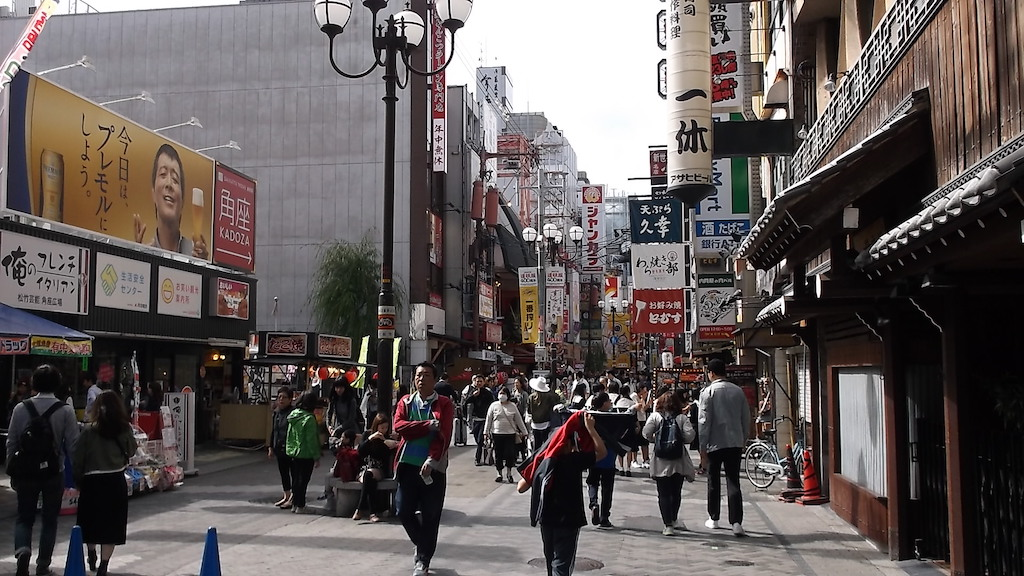
I would have to disagree with the above findings. If anything, it is down to the individual student's discipline as to whether the study process is easy or difficult. I also find it a shame that research findings can scare people away from what is a fascinating language.
For that reason, I have compiled this beginner's guide to Japanese. The aim is to provide an overview of the language and how to study it. I would ask you to believe that Japanese is not as difficult as the internet would have us believe.
The overall goal is that people already studying one language will also consider Japanese. Everything takes time, and there is no reason to rush learning a second language.
Here’s everything you need to know to study Japanese, plus answers to the questions you may have:
- What is Japanese?
- Learn the Japanese alphabet
- How to learn Japanese fast
- Is Japanese difficult to learn?
- Construct a study routine
- How long does it take to become fluent in Japanese?
- Is Japanese easy to learn?
- Asking for coffee
- The best way to learn Japanese online
- Japanese for beginners PDF (+free secret)
What is Japanese?

One hundred and twenty-eight million people are estimated to speak Japanese. Its exact origins are difficult to trace. There have been heated discussions that Japanese combines Chinese and other Asian languages. There is not enough evidence to confirm this theory.
Some academics believe Japanese originated in the ninth century from the Uralic languages. Uralic is a definition of languages formed in North Asia and Central, Eastern, and Northern Europe.
Learn the Japanese alphabet
I understand that many guides will focus on speaking Japanese first. From personal experience, I’m going to go against that advice. I have worked with many Japanese teachers who felt their English was poor as their schools focused on reading and writing rather than speaking English.
I feel learning Japanese is the opposite. I believe you will suffer in the long run if you do not first learn how to read and write in Japanese. My experience of this once extended to Hindi, which I found far easier once I understood how to read it.
Please make up your mind as to whether you will learn to read and write or speak Japanese first. Be aware that if you focus on learning to write Japanese, you will have a broader range of vocabulary far sooner.
With that said, let’s take a look at Japanese writing.
What is hiragana?
Hiragana is Japanese's simplest syllabary (symbols showing the syllables words contain). It comprises forty-six kana.
The Japanese language can be written in hiragana, breaking up its syllables. The syllabary appearance is curvilinear. The kana are pleasing to the eye. For beginners to the language, they are ideal for learning first.
The hiragana stroke order – with lots of practice – can be memorized. Students who want to move on to more complex kanji in their studies would be advised to perfect hiragana and katakana first.
Below are the hiragana for the word 'Hello':
こんにちは
konnichiwa
Now let’s break up the word into its five syllables:
1.こ = ko
2.ん = n
3.に = ni
4.ち = chi
5.は = wa
When saying konnichiwa, you can look like an expert if you make sure to pronounce the second syllable: ‘n.’ Many Japanese teachers where I worked picked me up on missing the pronunciation of ‘n.’ I have warned you!
Please notice the appearance of the hiragana above as being both curvy and straight.
What is katakana?

Usually described as being for foreign loan words, katakana is slightly similar to hiragana. The main difference is that katakana is not curvy but consists of straight lines. There are forty-six katakana. As with hiragana, diacritics can increase the number of katakana.
By placing extra marks on existing katakana characters, Diacritics extend the number of syllables. If you see the example below, we have the katakana for the syllable 'ka':
カ
By adding a diacritic mark to 'ka,' we can turn it into the katakana for 'ga.' Please see below:
ガ
What is kanji?
With their beauty and complexity, Japanese kanji fascinate and frighten some learners. Estimates of the total number of kanji vary from ten to nearly ninety thousand.
The good news is that around two thousand kanji are taught within schools and needed to read a newspaper. So, in terms of learning kanji, panic is not necessary.
In getting to grips with kanji, it is essential to understand the use of stroke order. I would advise beginners to master hiragana and then katakana before approaching kanji. This is because hiragana and katakana originate from kanji.
Although kanji appear complicated, they often contain the same if a not fewer number of strokes as English. Consider the kanji below and the English words they represent:
一 meaning in English: one
三 meaning in English: three
電 meaning in English: electricity
車 meaning in English: car
What is Rōmaji?
To help foreigners pronounce Japanese more easily, systems such as Hepburn romanization use the Latin alphabet to write in Japanese. Hepburn is the most popular system to do this. James Curtis Hepburn, a missionary, created it in the late nineteenth century.
For beginners to Japanese, the Hepburn system is pretty much a lifesaver. Below we have an example of the romanization of the Japanese word 'densha' meaning 'train' in English:
Densha = train. In kanji, this would be 電車, meaning 'Electric Car.'
でんしゃ
densha
1.で = de
2.ん = n
3.しゃ = sha
If you look at the kana above, you'll notice the use of diacritics again. The syllable' shi' is used for the Japanese syllable 'sha.' A smaller syllable for 'ya' is added to create the syllable 'sha.'
How to learn Japanese fast

Concentration: If you have read some of my other articles, you will know I have often covered the topic of distraction. To succeed in Japanese, I urge you to perfect your concentration skills.
Our attention has become very fragmented with television, video games, and mobile phones. If you want to succeed in studying Japanese, you will have to retrain your concentration span.
When working, I aim for four hours of concentration. I avoid internet shopping and turn off my mobile phone. I leave my computer switched off also. I use a pen and pad when writing.
Your concentration takes twenty minutes to recover once it has been disturbed. In a nutshell: you can sit down to study for an hour, but if you are distracted twice, you will have lost forty minutes of your hour.
You'll need patience and a study plan to develop better focus and concentration. If you are struggling to concentrate, I would recommend you begin by using a study desk in a local library. Then place your mobile phone on silent so you won't be disturbed.
Then, using increments, build your concentration up in blocks of twenty minutes. Do this one week at a time, such as the below:
- Week One: Aim for twenty minutes of undisturbed study per day
- Week Two: Forty minutes of controlled study every day
- Week Three: 60 minutes of peaceful study per day
If you can follow this pattern, two things will happen. The first is that you will waste less time during your Japanese studies. By concentrating undisturbed, you could save years of your time.
Some people have studied a language for ten years and made little progress. If you know someone like that, consider how they spend their time. Do they play video games often, stream movies, or endlessly stare at their mobile phones?
Try observing very successful people. Are they more disciplined than the average person? I am willing to bet that they are.
The second thing that will happen with a study plan is that you will enter a state that scientists call ‘flow.’
Flow is where you concentrate on a task so entirely that time flies by, and the task becomes much more accessible. You will also enter a meditation where your worries disappear. You will think of nothing but enjoying what you are currently working on.
I think 'flow' also means less guilt. Knowing you have studied efficiently will make you feel more confident in your target language. You will also feel less guilty than if you had spent time playing a game on your smartphone.
If you are interested in the subject of improving your concentration, then check out my other article, which is called 'Minimalism And Learning A Language.'
Is Japanese difficult to learn?
Not really. At first glance, Japanese may seem complicated, but it's down to how different it is from your native language.
I once took some lessons in Japanese while working abroad. There were a lot of Chinese students in my class. As they had experience in writing hanzi characters, which many kanji descend from, they had the edge on me in terms of written Japanese.
For the above reason, I spent much extra time learning hiragana, katakana, and kanji. That spare study time paid off and helped to make speaking Japanese easier for me. I had also constructed a study routine that included small treats to make the learning experience more fun.
Construct a study routine
Please see below for my practice, and think of making your own:
- 7am to 8.30am: Practice hiragana/katakana/kanji
(This involved drinking a pot of excellent coffee and listening to two music albums, one after another).
- 12pm to 12.30pm: Look through Japanese vocabulary cards
(This was done in the first half of my lunch break while munching a sandwich and drinking green tea).
- 6pm to 6.30pm: Speak Japanese sentences out loud
(I did this while getting ready for a night out with my friends).
- 6.30pm to 7pm: Practice lesson with an online Japanese teacher
(If I did not go out, I would complete a class with an online professional teacher)
If you want to construct your study routine, try to find out which parts of the language are hardest for you. As you can see from my routine, writing kana was my weak point and needed the most time: ninety minutes.
One of the quickest ways to find out your strengths and weaknesses in Japanese is to study with a professional teacher. Although many of us are busy with other areas of our lives, the ability to schedule lessons at home is the best way to make Japanese easier.
You will also learn Japanese much faster if you study with another person rather than alone. It also doesn't need to cost a lot of money. You can book a few trial lessons online to see if Japanese is for you and if you will enjoy it.
How long does it take to become fluent in Japanese?
This question depends on which part of Japanese you are thinking about: spoken or written. Written and spoken Japanese should at least be studied simultaneously, at least that's what I believe.
A friend of mine had a deep interest in Japanese kanji. He had devoted years studying them. He is not interested in speaking Japanese but enjoys the craft of writing in Japanese. I asked him why he does not practice speaking. He said that he is interested in kanji as a way of relaxing. The process takes him out of himself and away from the stresses of life.
Becoming fluent in Japanese has one secret. You must enjoy the process of learning Japanese; that is the only magic to it. Otherwise, studying it will feel difficult and time-consuming.
I love to study and write kanji. Overall I look at two hours of Japanese a day. Thirty minutes of the two hours are devoted to kana. I know this is not enough daily, but whenever I get extra time in the week, I spend more time on written Japanese.
I enjoy popping in my headphones, sipping a green tea, and writing out the kanji while listening to Marconi Union’s Weightless. Writing is not a tick-in-the-box process but a labor of love.
Hopefully, you will adopt this same feeling to all aspects of your Japanese studies. If you enjoy your study, the time will fly, and you could be fluent before you know it.
Is Japanese easy to learn?
Japanese contains many small touches, making studying enjoyable and easy. They can be anything from the level of politeness contained in a sentence to the meaning of names. For an example, please see the below Japanese forenames and their English meaning:
- Midori: meaning Green in English
- Yuki: meaning Snow in English
Asking for coffee
Let's look at the art of ordering coffee to see how Japanese can be difficult or easy in practice.
The above can be done in several ways depending on how well you know someone and your position with them. Family members can ask each other for coffee in a very informal way which would be the noun followed by the particle 'wa':
コーヒー は? = Kōhī wa? = You want coffee?
If you have known someone for a while, but the connection between you is limited, you could ask for coffee using the word 'O kudasai' meaning 'please give me':
コーヒー をください = Kōhī O kudasai = Please give me coffee
If you have never met someone before, I would suggest the more polite way to ask for something, which is 'Onegaishimasu':
コーヒー を お願いします = Kōhī Onegaishimasu = Please give me coffee
There are many different ways to ask for something in Japanese. Phrases such as 'Won't you please have some coffee?' are often in use.
When studying Japanese, I've met people who use other terms and feel that 'Onegaishimasu' is too formal for a coffee shop. I still feel more comfortable using it, and it will be up to you which phrase you want to use when ordering food and drink.
Will it be embarrassing if I make a mistake in Japanese?
The Japanese language can be complex in its different levels of politeness. As a nation, the Japanese know this can be difficult for foreigners to understand and get right. If you visit Japan, you will be grateful that the Japanese have a lot of patience with people using their language.
Off the beaten path, you will meet Japanese citizens who may not have come across foreigners who can speak Japanese. They will be very curious about you and ask a lot of questions. The last thing on their minds will be that you made small mistakes when conversing with them.
Some simple expressions will help if you have any problems speaking with native Japanese people:
1.Sumimasen, watashi wa rikai dekimasen = I'm sorry, I don't understand?
2.Mōikkai itte itadakemasu ka = Could you repeat that, please?
Another myth that populates the internet is that Japanese people don't want to speak English. In terms of personal connections, it is down to the individual.
I cannot tell you about people in Tokyo as I have spent my time in Kobe, Kyoto, and Osaka. When I visited those areas, particularly Osaka, I did not come across too many people completely fluent in English. One person told me they had not used English in their conversation for over two years.
Some people are worried their English is not good enough and do not speak any to avoid embarrassment. Losing face can make many people nervous about speaking a second language.
Being nervous speaking in English does not just happen in Japan. In Shanghai, I found that most people under thirty could speak excellent English, but I would have to start the conversation first.
In Osaka, it was obvious that people do want to talk to foreigners. They are very friendly and curious when they find out you can speak some Japanese.
I am trying to ask you not to suspect that people do not want to talk to you. But please realize they may be worried about how they will sound in English.
If you travel alone, you will always need to be forward and start conversations wherever you are. Breaking the ice with anyone is never easy, but being able to get by in the local language is always a plus.
Make connections before you arrive
If you are worried about making connections when traveling, online language learning platforms can significantly help. Not only can you make friends before you embark on your journey, but you can also get advice from a professional Japanese teacher.
As well as offering language lessons, the teacher will educate you on Japanese customs and even provide inside knowledge on where to travel and stay. You could save a fortune on your dream trip to neon-lit Tokyo with some friendly advice.
The best way to learn Japanese online
I’ve tried many apps, but I think you’re better off with human interaction. As well as apps, it helps to have a native Japanese teacher.
I recommend italki, who can connect you with a good teacher who will adequately plan your lessons. That way, your learning has a roadmap and is directed.
I once worked in a Japanese language school, and I noticed that the students there were much better at Japanese than friends studying alone online. That’s just my opinion, so please trust your judgment.
Japanese for beginners PDF (+free secret)
As well as placing this article in a PDF, I’ve included something you might find interesting. I once made some English lessons for my girlfriend who was from Osaka.
At the end of the PDF, I’ve added two short lessons I created for her. You might find it interesting how a Japanese person wanted to learn English!
Please let me know how long you’ve been learning Japanese or how long it took to become fluent. Please drop me a line in the comments below! I’ll respond as soon as I can.
Thanks for reading my article, and I wish you every success in learning your target language. 🙂
Hero image by David Edelstein on Unsplash







